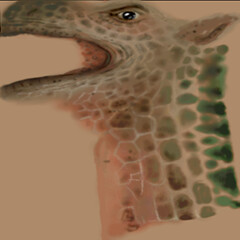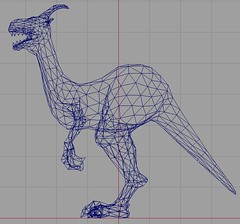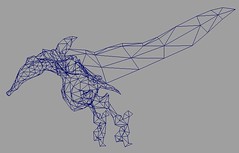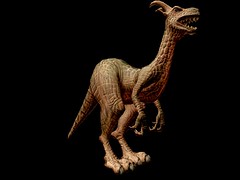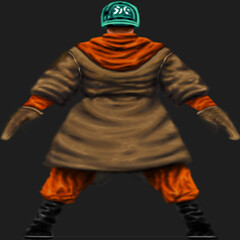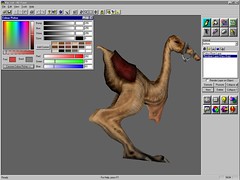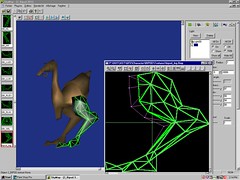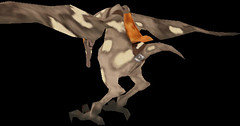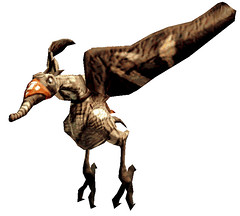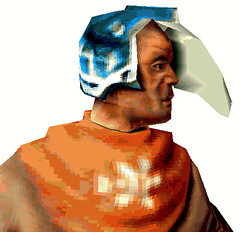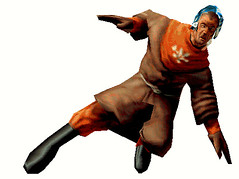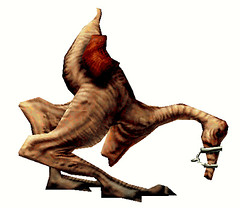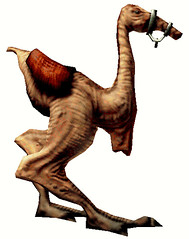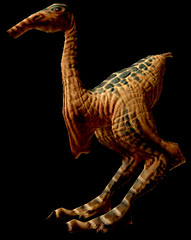Outcast
Outcast (Windows) 1999
First bloom lighting, first depth of field, first keyframe animation, first procedural animation,
first relief mapping, advanced lens flare effect
Gameplay video
game art
Magazine review - Computer and video games (1999)
Behind the scenes pictures
Trivia:
1) The AI used in Outcast was considered revolutionary at the time it was released. It was based on a proprietary engine codenamed GAIA, for Game Artificial Intelligence with Agents. Intelligence
is represented as a distributed activity over a set of autonomous routines called agents. An agent uses skills, such as hearing, sight, acrobatic, to complete assigned tasks. These agents can
interact and even compete with each other to realize a complex task.
2) Outcast features a high-quality orchestral score composed by Lennie Moore and performed by the Moscow Symphony Orchestra and choir. At the time of Outcast's release, orchestral game scores
were uncommon, and Moore's achievement was hailed as "absolutely top-notch".
3) In 2001 sequel developed, called "Outcast II: The Lost Paradise", it was never finished due to bankruptcy of Appeal (developer company). It was released in 2017 under the name "Outcast: Second
Contact" for consoles and Windows.
4) Myst series (travel to worlds through portals) and Half-Life (automated voice of the protagonist costume) -one of many inspirations for this game.
5) Bloom lighting is a computer graphics effect used in video games, demos and high dynamic range rendering (HDR) to reproduce an imaging artifact of real-world cameras. The effect produces fringes (or feathers) of light extending from the borders of bright areas in an image, contributing to the illusion of an extremely bright light overwhelming the camera or eye capturing the scene.
6) Depth of field - a post-processing blurring effect used mostly by modern action games, particularly modern first-person shooters. Used to blur foreground or background elements to simulate a lens focus.
7) A key frame in animation and filmmaking is a drawing that defines the starting and ending points of any smooth transition. The drawings are called "frames" because their position in time is measured in frames on a strip of film. A sequence of key frames defines which movement the viewer will see, whereas the position of the key frames on the film, video, or animation defines the timing of the movement. Because only two or three key frames over the span of a second do not create the illusion of movement, the remaining frames are filled with inbetweens.
8) Game uses voxels. Watch Blade Runner for more voxel games.
9) Updated version of the game that supports modern videocards was released in 2014 for Windows under the name Outcast 1.1.
Site Developed from 2008-2014
Site Launched -2014, may
tags: history of videogames, ultimate history of video games, evolution of videogames, история видеоигр, история компьютерных игр, history of video games,
ultimate history of videogames,#gaming #videogames #gamesHashtag
See my other website: Ultimate history of computer
animation (CGI)
Contacts
You can write comments on every site page in comments plugin.
Facebook page
https://www.facebook.com/Ultimate-History-of-video-games-800240053376952
 ULTIMATE HISTORY OF VIDEO GAMES!
ULTIMATE HISTORY OF VIDEO GAMES!















